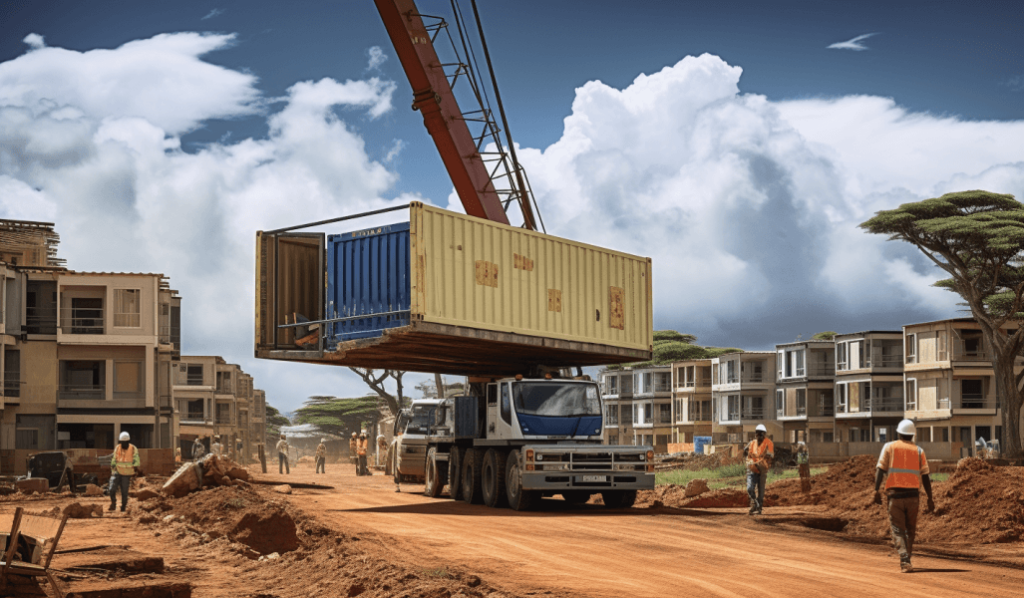In recent times, Kenya has witnessed a significant rise in the cost of living, creating challenges for its citizens, particularly low-income households.
This surge in living expenses has not only affected the day-to-day lives of ordinary Kenyans but has also cast a shadow over the real estate market in the country.
Table of Contents
Rising Cost of Living: A Burden on Citizens
The cost of living crisis in Kenya has been characterized by a general increase in prices of necessities such as food, transport, and energy.
This inflationary pressure has outpaced the growth in incomes, leaving consumers with reduced purchasing power. According to the Kenya Economic Report 2023, overall inflation averaged 8.7% between June 2022 and June 2023, peaking at 9.6% in October 2022.
The main drivers of this inflation were food and transport, which account for a significant portion of the consumption basket for households in Kenya.
Impact on the Real Estate Market
The impact of the rising cost of living has spilled over into the real estate market.
Housing, an essential component of the consumption basket, has become less affordable for many Kenyans. However, the government’s ambitious affordable housing projects and housing levy have aimed to address the housing crisis by providing low-cost housing options.

However, the affordability of these projects is still a concern for low-income households, given their limited purchasing power.
READ ALSO: Pricing of The Affordable Housing Houses By The Government of Kenya
Protecting the Real Estate Market from the Rise in Cost
To protect itself from the rising cost of living, the real estate market in Kenya needs to adapt and innovate. Developers may consider diversifying their housing projects to cater to different income segments, ensuring affordability while maintaining quality.
Collaborations with the government and financial institutions can help create favorable financing options for potential homebuyers.
READ ALSO: KMRC’s Affordable Mortgage Options for Middle-Income Buyers
Additionally, addressing challenges related to land acquisition, construction costs, and regulatory hurdles can contribute to reducing overall property prices.
Some Developers have resorted to pricing their projects in Dollars to protect themselves from the weakening Kenyan Shilling.
READ ALSO: Property Developers Forced to Sell Houses in USD Amid Kenya Shilling Devaluation
Factors Driving the Rising Cost of Living
Several factors have contributed to the rising cost of living in Kenya.
- Prolonged drought in 2022 disrupted food supply, leading to increased reliance on imports.
- The depreciation of the Kenyan shilling against major trading currencies further pushed up prices of imported commodities and materials.
- The Russia-Ukraine war disrupted the global supply chains of major foodstuff and materials, affecting Kenya’s import-dependent market.
- Additionally, the surge in global oil prices had a direct impact on local fuel prices, exacerbating the inflationary pressure.
Affecting Other Industries and Markets
The high cost of living has reverberated across various industries, affecting businesses and consumers alike.
Industries such as manufacturing, transport, electricity production, and mining, which heavily rely on petroleum products, have faced challenges due to higher fuel prices.
Additionally, the overall slowdown in consumer spending has impacted retail, hospitality, and entertainment sectors, leading to reduced economic activity.
Impact on Day-to-Day Life of Every Kenyan
For ordinary Kenyans, the rising cost of basic commodities has made it increasingly difficult to make ends meet. The increased prices of food, fuel, and housing have led to a decrease in the quality and quantity of goods and services that people can afford.
The cost of living crisis has forced individuals and families to reevaluate their spending habits, prioritize essential needs, and make difficult financial decisions such as moving to more affordable houses where rent is manageable.
READ ALSO: 7 Effective Strategies for Tenants to Negotiate Cheaper Rent
Conclusion
In conclusion, the rising cost of living in Kenya has had a profound impact on the real estate market and the everyday lives of its citizens.
Finding innovative solutions, fostering collaborations, and implementing sound policies are essential steps to mitigate these challenges and create a more stable and affordable living environment for all Kenyans.



